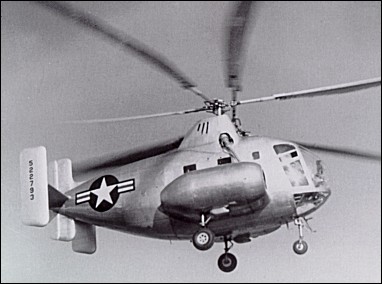
| Kellett XR-10 1955 |  |
 |

| Kellett XR-10 1955 |  |
 |
|
When it made its first nights in April 1947 this helicopter was the largest and most powerful designed for the United States Air Force at that time. Like the XR-8, it was of the "synchropter" type with contra-rotating and intermeshing rotors. The rotors were driven by two engines mounted on nacelles on either side of the fuselage so as to leave the cargo space unobstructed, and cooling was by the flow of air induced through the nacelles. Rotor head linkage allowed the blades to pivot in the horizontal and vertical planes. In the horizontal plane, blade movements were damped by vibration dampers; the position of the blades was a function of the centrifugal force and the loading conditions, but there were, of course, stops to limit these movements. The rotors were synchronized through a cross drive between the upper transmissions. One special feature of this XH-10 was its ability to fly on one engine with normal gross weight at altitudes of up to 1400 metres. P.Lambermont "Helicopters and Autogyros of the World", 1958
|